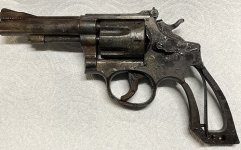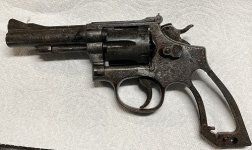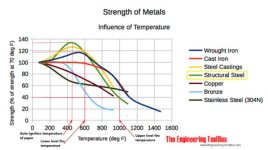Some good family friends lost their house, and their Father In Laws house 2 blocks away in the recent Eaton fire in California.
We recovered these two revolvers and I would like to return them to, if not usable at least a condition where they could enjoy the memories they have had with them.
Let me say I already learned a lot by reading the thread on how to help identify these guns. I'm a gun guy, but not a revolver guy so I enjoyed the history lesson. So here we go.
38 spl serial #140592
22lr Serial #207652
Both have 5 screws and the tension screw on the front strap
Both are 4" barrels
See attached pics
Thanks in advance for any help you can offer as these people are hurting in ways I can't begin to imagine.
We recovered these two revolvers and I would like to return them to, if not usable at least a condition where they could enjoy the memories they have had with them.
Let me say I already learned a lot by reading the thread on how to help identify these guns. I'm a gun guy, but not a revolver guy so I enjoyed the history lesson. So here we go.
38 spl serial #140592
22lr Serial #207652
Both have 5 screws and the tension screw on the front strap
Both are 4" barrels
See attached pics
Thanks in advance for any help you can offer as these people are hurting in ways I can't begin to imagine.



